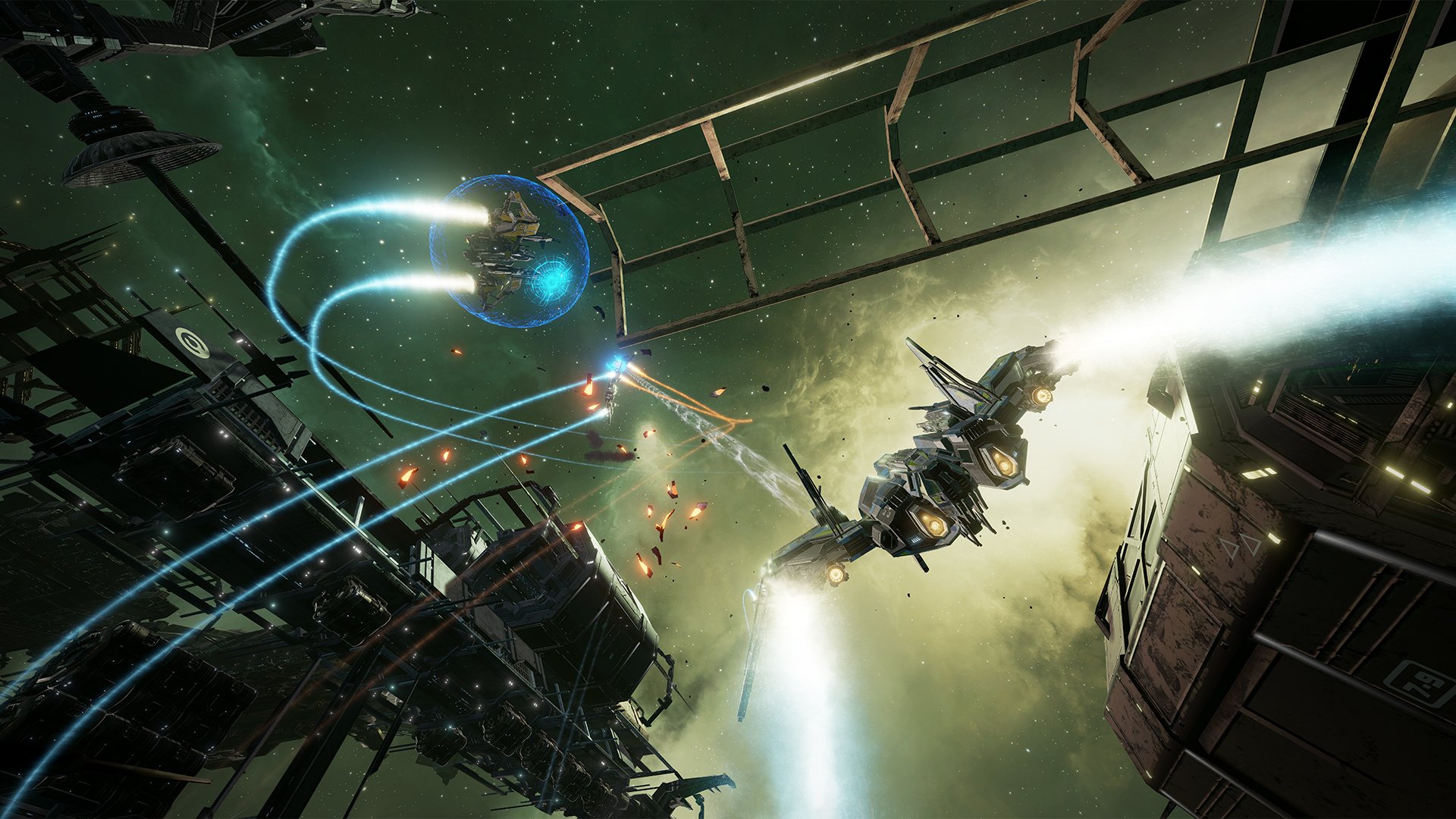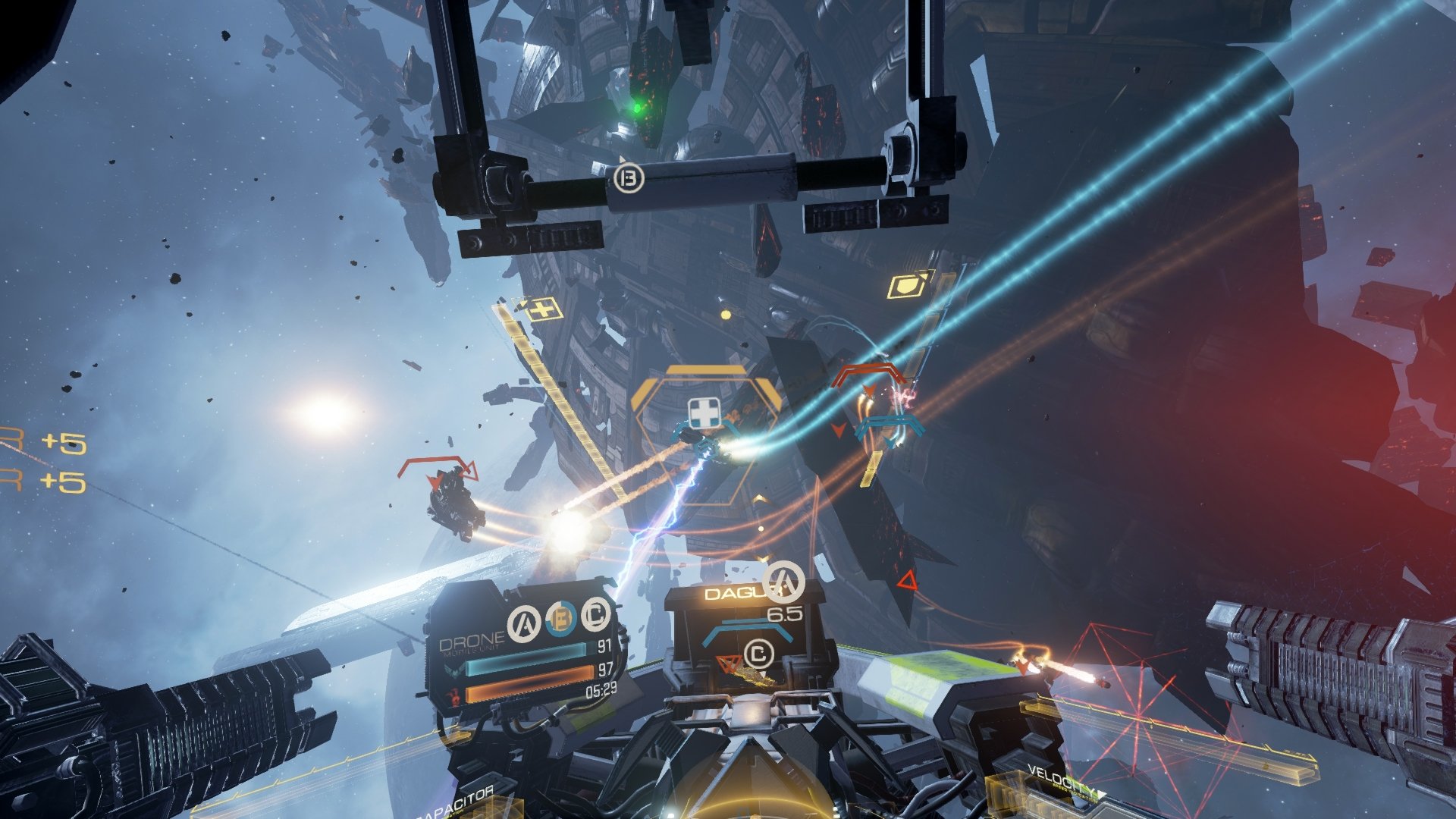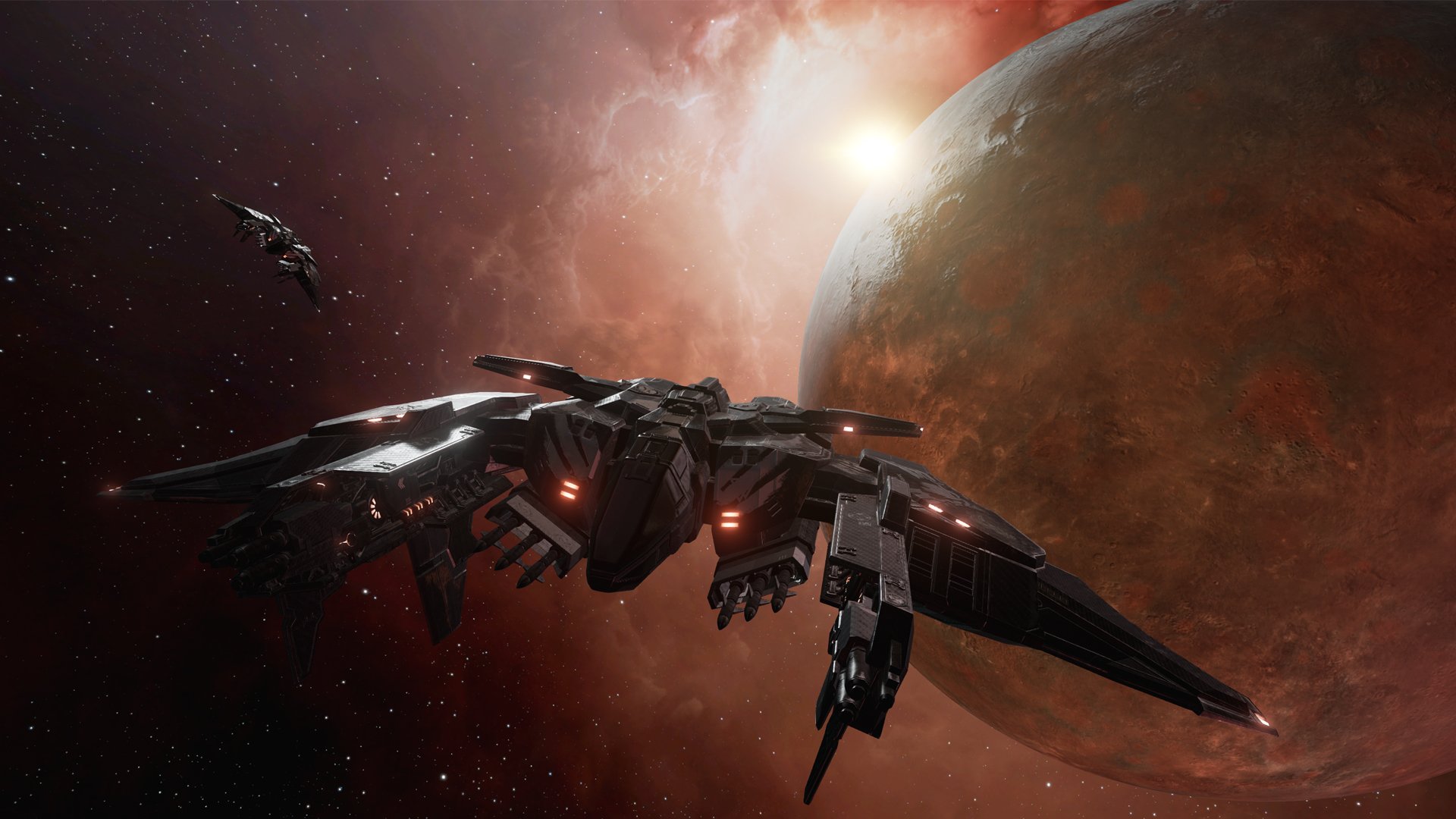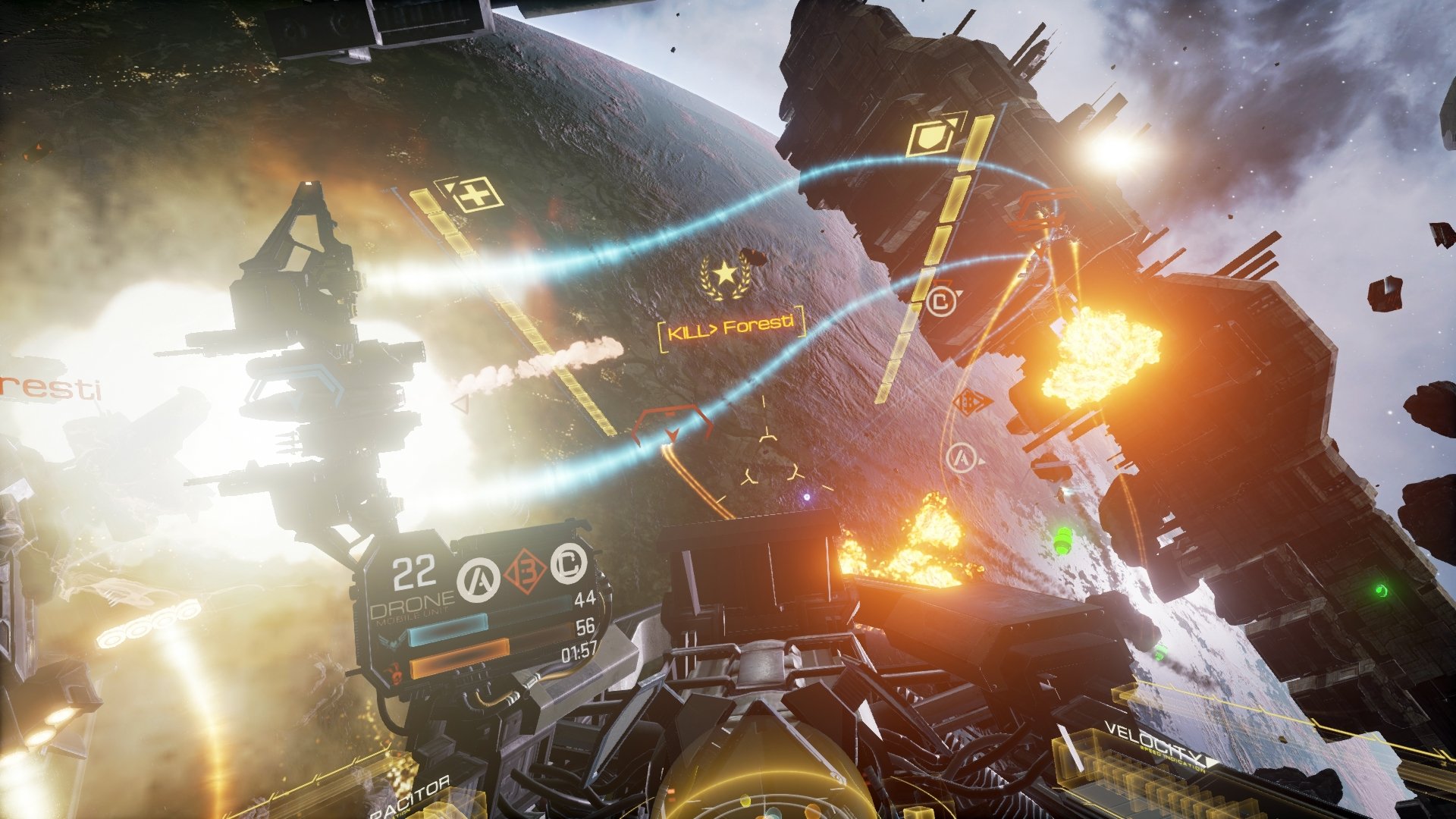EVE: Valkyrie is the last thing you'd expect from VR: a fully realized game
Until now, every VR demo I'd ever tried felt like a ride at a theme park; a fleeting burst of excitement built to run the same exact way every time. None of them lasted more than a few minutes, because anything longer would've threatened to ruin the magic when the demo ran out of cool spectacles to parade in front me. But EVE: Valkyrie, coming to PlayStation VR and Oculus Rift, feels different. Not only does it immerse me in thrilling outer-space dogfights - it feels like something with true depth, something I actively want to get better at and eventually master. Unlike every VR experience before it, EVE: Valkyrie has managed to tap into my burning competitive spirit as only the best multiplayer games can.

Before each match, I'm customizing my ship loadouts to match my aggressive, all-or-nothing FPS habits. When I blast out of my carrier's Battlestar Galactica-style launch tubes, I stick with my teammates to up my chances for survival in this harsh PvP arena. I'm keeping a watchful eye on the scoreboard, hoping to see my name at the top of the team. And when I'm obliterated by a hail of enemy fire after being caught out of position, all I want to do is immediately spawn back in and exact my revenge. These are the same adrenaline spikes that keep me coming back to the best FPS games - but none of those were made with sense-enveloping headsets in mind. "We were built from the ground up for VR," says lead game designer Andrew Willans. "This is not like a project where someone said, 'Oh, let's do a VR version.' The purpose of Valkyrie was always VR."
With the largely uncharted territory of dedicated VR gaming comes an unfamiliar, incredibly crucial new skill: look-to-lock targeting for your missiles, which you'll have to master if you want to survive Valkyrie's space battles (which have no connection to EVE Online besides the overall universe). A separate reticle on the clean UI follows your real-world gaze as you crane your neck to check your corners, subtly snapping to whatever ship you've literally got in your sights. "We found a lot of people sitting in VR were just looking forward," says Willans. "And it's like, 'You can look everywhere!' So this was a mechanic that was designed to help people move, to help people get used to actually using all of this space, because it makes you a more effective pilot. But also, it's just so intuitive to look at what you want to shoot."

Few things are as universally appealing as epic space battles, so Valkyrie's basic controls are designed to match that level of accessibility. Piloting your ship with a standard gamepad is simple: the left stick steers your ship, the right trigger fires your primary weapon, and the left trigger activates your secondary weapon. Yes, it does get more complicated than that, with special abilities, thrust boosters, and barrel-rolling. Your ships are categorized into three core classes: Fighter, Heavy, and Support, each with their own unique strengths that you can amplify or alter with modifications earned through a traditional multiplayer progression system. But anyone who's ever played a shooter in their life will be able to jump in and start cruising and gunning through space without much trouble. Willans cites classics like Counter-Strike, Team Fortress, and Battlefield as influences for Valkyrie's combat, all of which feel pretty universal these days.
Locking onto your targets with your eyes while performing evasive maneuvers with your fingers is key to flying a Fighter ship, my personal favorite. This is essentially the assault class you've seen in so many shooters: well-rounded, agile, and packing mounted machine guns with respectable firepower. And no matter how hectic the action gets, it feels totally natural tracking my targets with my eyes for a missile lock, all while steering my ship and trying to line up the primary crosshairs in my peripheral vision. But a missile lock doesn't guarantee a hit: expert pilots will weave through the environments to throw the missiles off their trail, or deploy countermeasures via two mini-turrets that spray bullets wildly around your vicinity. The time it takes to drain the shields on an enemy ship and finally secure a kill feels just right; a few missile volleys will take down almost anything, but your machine guns will work in a pinch. I'm pretty sure I also scored a few one-for-one kills by smashing head-on into other pilots, through I don't recommend it as a viable strategy.

Meanwhile, the armored Heavy ship aims its chunky, splash-damaging primary shots via headtracking, with a 'micro warp drive' as its secondary ability, letting it boost forward for a quick escape or surprise initiation. And the Support class is no slouch either; instead of missiles, it's got a look-to-lock beam that can charge up allies' shields or drain enemy' defenses. Its secondary is a handy mine that deploys what Willans affectionately calls a "digital spider web floating in space", which slows and debuffs opposing ships who foolishly try to fly through it. These are but a few of the ship combinations possible in Valkyrie; Willans explains that you'll be able to fine-tune the four ships you bring into each fight, adjusting things like armor, speed, and secondary weapons to match your personal preference.
Willans takes care to reiterate that no one ship type or combination of parts will be more powerful than the rest. The maps, HUD, and audio cues are all similarly fine-tuned to deliver the best gameplay possible, giving you clear markers for your objectives and targets while deftly warning you whenever danger's nearby. "[In VR,] everything needs to be almost amplified to catch your attention," says Willans. "From a gameplay point of view and from a visual language point of view... it's intense. It takes a lot of playtesting."
Sign up to the GamesRadar+ Newsletter
Weekly digests, tales from the communities you love, and more

That playtesting will be EVE: Valkyrie's greatest strength. Most things built for VR are tuned to eliminate motion sickness, or improve the visual fidelity, or subtly guide the user towards what they should be looking at. But Valkyrie is being rigorously playtested even in this pre-Alpha state, because that's just what you do when you're crafting a multiplayer-focused game meant to thrive when it's finally in player's hands (and strapped around their heads). "This is no word of a lie: we put the servers up for 24 hours over the weekend, and there was a guy who I think was on for nine hours straight," laughs Willans. "I've done three hours straight, and it was just incredible. The time just disappeared."
Granted, those are the words of Valkyrie's lead designer, but think about it. I wouldn't spend three hours milling around a limited VR demo, no matter how immersive it felt - but I've marathoned plenty of multiplayer games for three hours straight without batting an eye. EVE: Valkyrie is the kind of experience you can lose yourself in - not just because it's immersive, but because it's a nuanced, meticulously developed, eminently playable game.
Lucas Sullivan is the former US Managing Editor of GamesRadar+. Lucas spent seven years working for GR, starting as an Associate Editor in 2012 before climbing the ranks. He left us in 2019 to pursue a career path on the other side of the fence, joining 2K Games as a Global Content Manager. Lucas doesn't get to write about games like Borderlands and Mafia anymore, but he does get to help make and market them.



